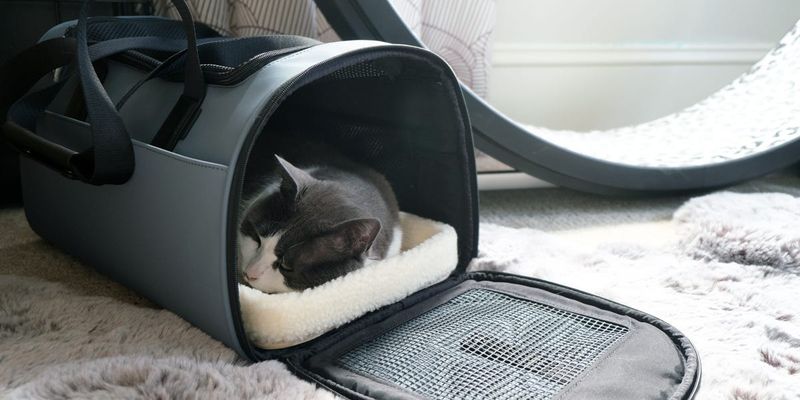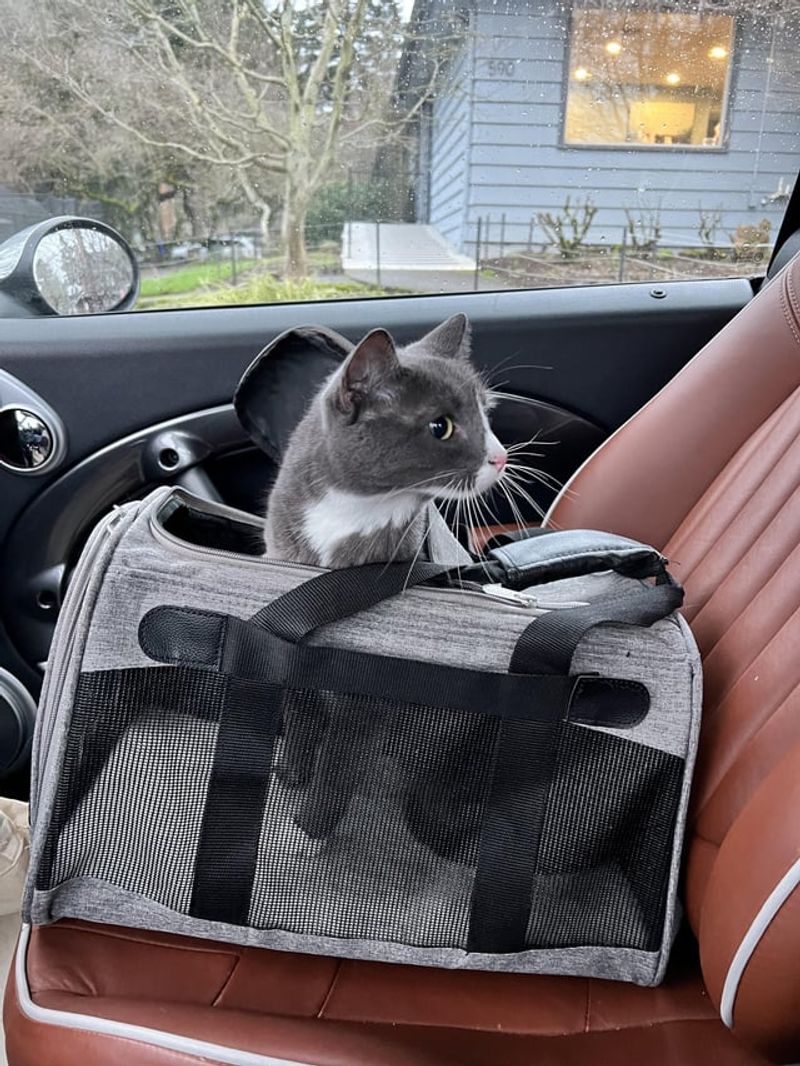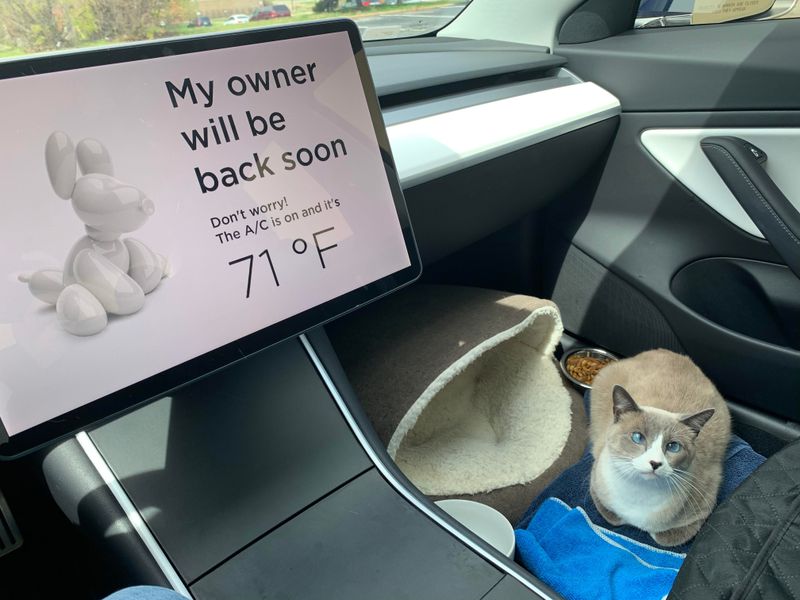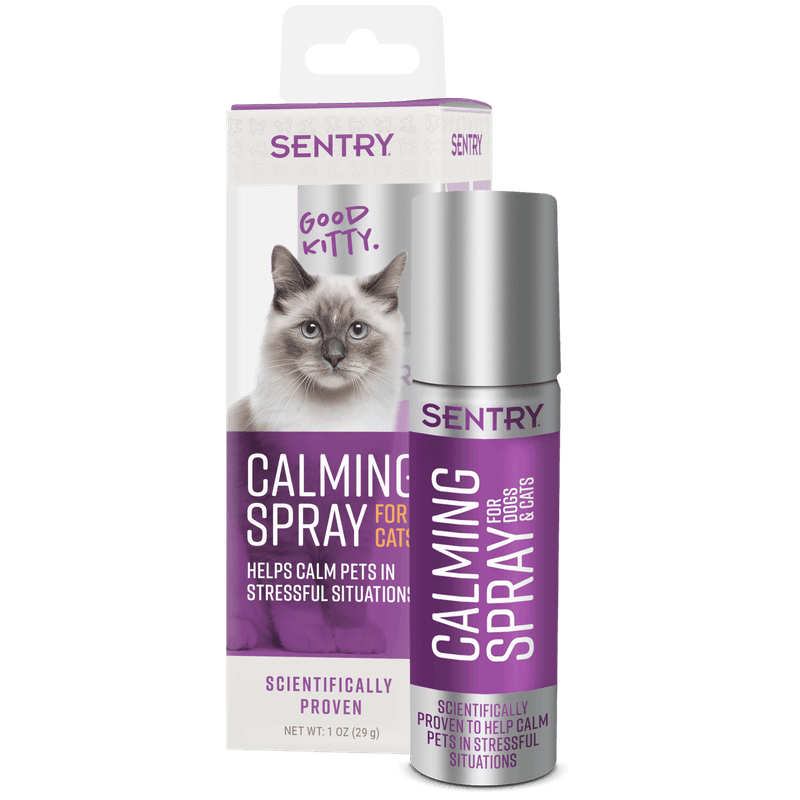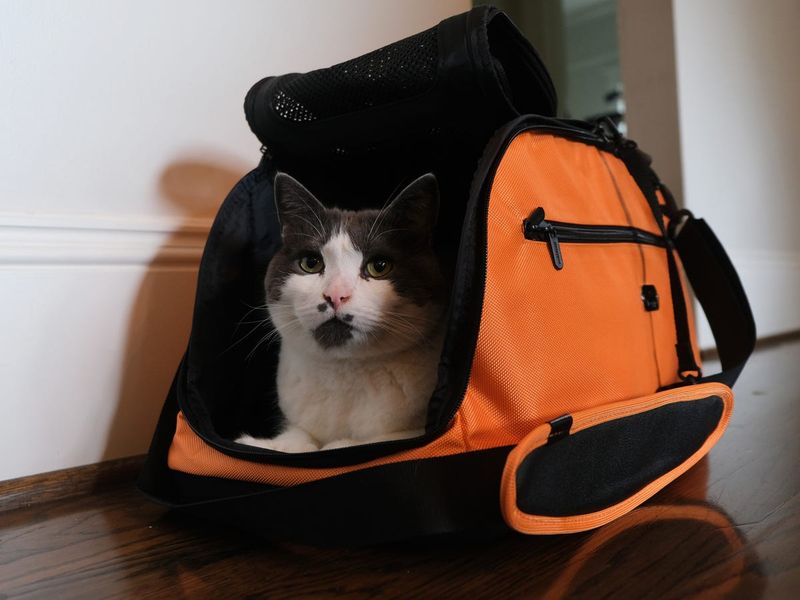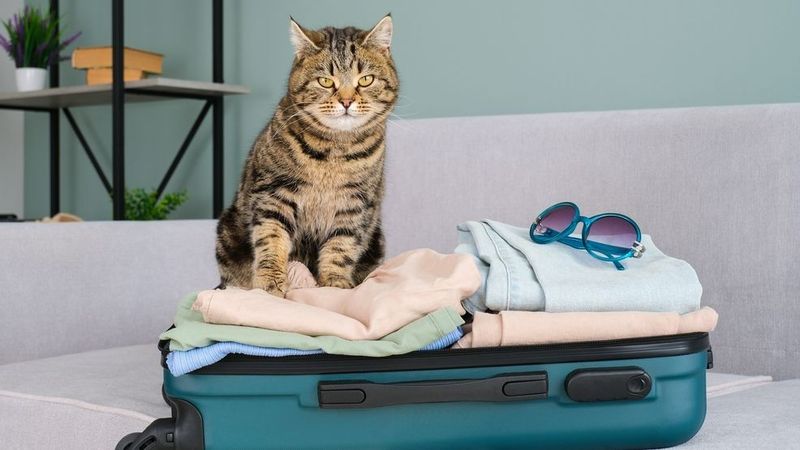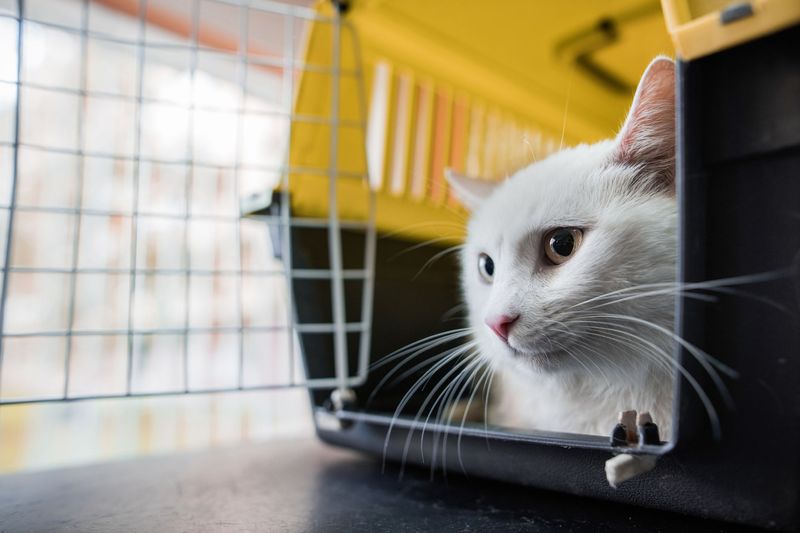📖 Table of Content:
- 1. Start With Short Rides
- 2. Use a Secure Carrier or Harness
- 3. Make the Car a Happy Place
- 4. Practice Desensitization
- 5. Keep the Temperature Comfortable
- 6. Use Calming Aids
- 7. Block the View if Motion Triggers Anxiety
- 8. Avoid Feeding Right Before Travel
- 9. Keep Things Calm and Quiet
- 10. Speak to Your Vet if It’s Severe
If your cat bolts under the bed at the sound of your car keys or yowls nonstop during every car ride, you’re definitely not alone. Many cats find car travel deeply distressing—unlike dogs, most felines aren’t used to leaving their territory, and the car’s strange noises, motion, and smells can feel terrifying. This anxiety can turn routine vet visits or necessary relocations into high-stress situations for both cat and caregiver.
The good news is that with a little patience and the right techniques, you can help your cat build confidence and feel more secure during car trips. From creating positive associations with the car to using feline-friendly calming aids, there are effective steps you can take to reduce their stress. These changes don’t happen overnight, but with consistency, your cat can learn that the car isn’t such a scary place after all.
In this article, we’ll explore 10 proven tips to calm your cat’s car travel anxiety. These strategies are designed to support your cat emotionally and physically throughout the travel process, making trips more peaceful and manageable. Whether you’re prepping for a big move or just trying to survive the annual vet visit, these tips will help you both breathe a little easier.
1. Start With Short Rides
Helping your cat grow comfortable with car travel starts by taking things slow. Instead of jumping into a 30-minute drive, begin by simply placing your cat in the carrier and sitting in the parked car. Once they’re used to that, try short drives—just around the block. These bite-sized experiences help reduce the shock of unfamiliar motion and sounds. After each ride, return home and offer your cat their favorite treat or gentle petting to reward calm behavior. It’s best to repeat this process every couple of days to build familiarity. Over time, these mini-journeys will reduce fear and increase confidence.
2. Use a Secure Carrier or Harness
A cozy, well-ventilated carrier can make all the difference for a nervous cat. Most felines feel safest in enclosed spaces, so choose a sturdy carrier lined with a soft towel or blanket from home. Including something that smells like you or their bedding gives comfort through scent. Keep the carrier in a common area at home before the trip so your cat can explore it on their own terms. When inside the car, place the carrier securely on the seat and use a seatbelt if possible. Avoid facing the carrier toward the window, which can overstimulate your cat. A secure, familiar-feeling space helps reduce the shock of travel.
3. Make the Car a Happy Place
Transforming your car into a cat-friendly space begins with familiarity. Leave the carrier open in a parked car while you sit nearby and offer treats or gentle words. Let your cat walk into the carrier voluntarily, rather than being placed in it under stress. Use a towel or seat cover that carries scents from home to comfort your cat. You can even feed your cat in the car while it’s stationary to create positive associations. Avoid sudden noises like slamming doors or loud music during these sessions. Gradually, your cat will start associating the car with safety instead of stress.
4. Practice Desensitization
Desensitization helps cats adjust to the car through slow, controlled exposure. Start with short sessions where you place your cat in the carrier and sit in the unmoving car. Once they’re calm during those, turn on the engine and remain parked to introduce the vibrations and hum. Watch your cat’s body language—relaxed ears, stillness, and quiet meows are all signs of progress. Gradually work up to driving short distances, always returning home and rewarding them afterward. This staged exposure teaches your cat that car rides aren’t always scary or traumatic. With patience, you’ll see their anxiety begin to lessen.
5. Keep the Temperature Comfortable
Maintaining a cozy, climate-controlled environment is crucial for feline comfort. Cats are sensitive to both heat and cold, and extremes can amplify their stress. Before placing them in the car, ensure the temperature is moderate and that the air isn’t blowing directly into the carrier. Avoid leaving the carrier in direct sunlight, which can quickly lead to overheating. If you’re driving during colder months, preheat the car for a few minutes before the ride. Keep windows closed to minimize jarring sounds or cold drafts. A calm, quiet, temperate space makes it easier for your cat to relax.
6. Use Calming Aids
Using cat-specific calming products can gently ease your feline’s anxiety. Feliway spray mimics feline facial pheromones, signaling safety and calm to your cat’s brain. Spritz the inside of the carrier and your car upholstery about 15 minutes before placing your cat inside. Some cats also respond well to calming collars or vet-approved CBD oil—always consult your vet first. These aids work best when paired with the other strategies, not as a standalone solution. Avoid over-scented products or essential oils, which can overwhelm or irritate your cat. A little natural support goes a long way when used mindfully.
7. Block the View if Motion Triggers Anxiety
Blocking visual stimulation can help cats who become overstimulated by passing scenery. Cover the carrier with a breathable towel or lightweight blanket to create a dark, den-like environment. This reduces the barrage of sights that may trigger fear or motion sickness. Be sure the towel allows for airflow and doesn’t trap heat inside the carrier. Place the carrier low on the seat or footwell rather than at window height. The less your cat sees outside, the more they can focus on staying calm within their safe space. Think of it as creating a little sanctuary in motion.
8. Avoid Feeding Right Before Travel
Feeding your cat right before a ride can lead to nausea or vomiting during travel. It’s best to feed your cat at least three hours before you plan to leave. This allows enough time for digestion and minimizes the risk of car sickness. If your cat is prone to vomiting even on an empty stomach, ask your vet about anti-nausea options. You can still bring treats along to reward them after the ride. Avoid giving full meals during or immediately after the trip. A light stomach helps keep their focus on calming down, not coping with motion.
9. Keep Things Calm and Quiet
Your car’s sound environment plays a major role in your cat’s stress level. Avoid playing loud music, slamming doors, or speaking loudly while your cat is in the vehicle. Instead, speak in soft tones or play gentle classical music if anything at all. Cats are highly attuned to sound, and even small noises can feel amplified inside a confined space. If traveling with other passengers, ask them to keep voices low and avoid sudden movements. Think of your car as a mobile zen space—peace and predictability go a long way. The more relaxed the environment, the more relaxed your cat can become.
10. Speak to Your Vet if It’s Severe
In cases of extreme fear, it’s wise to consult your veterinarian. Some cats experience such intense anxiety that behavioral training and environmental changes aren’t enough on their own. Your vet may recommend a mild sedative or anti-anxiety medication for rare, high-stress trips. They can also help rule out motion sickness or underlying health issues contributing to the fear. Don’t guess or medicate with human solutions—cats require specific dosages and medications. A professional opinion ensures you’re addressing the issue safely and effectively. When in doubt, a vet’s guidance can be a game-changer.


